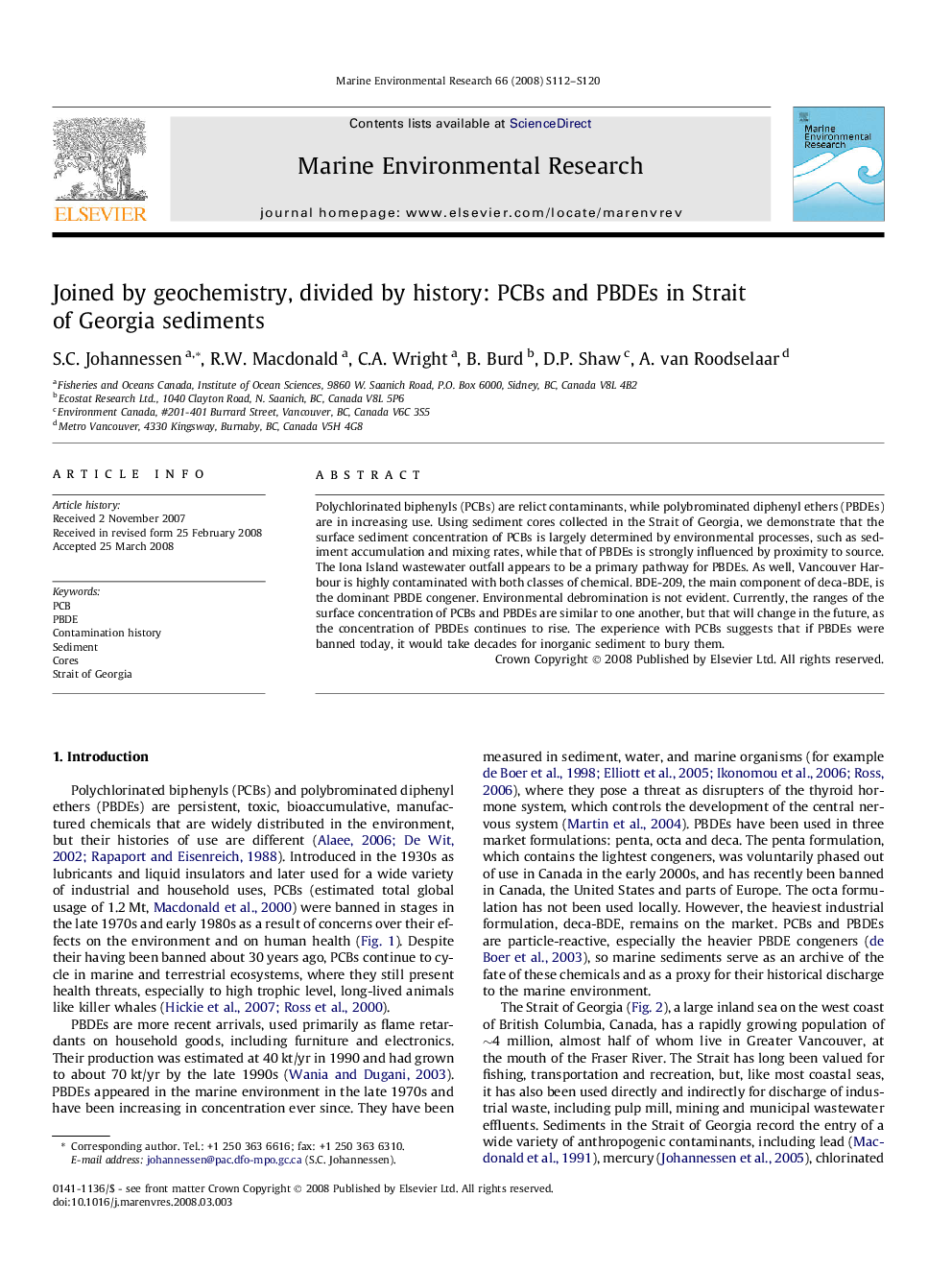| Article ID | Journal | Published Year | Pages | File Type |
|---|---|---|---|---|
| 4551655 | Marine Environmental Research | 2008 | 9 Pages |
Polychlorinated biphenyls (PCBs) are relict contaminants, while polybrominated diphenyl ethers (PBDEs) are in increasing use. Using sediment cores collected in the Strait of Georgia, we demonstrate that the surface sediment concentration of PCBs is largely determined by environmental processes, such as sediment accumulation and mixing rates, while that of PBDEs is strongly influenced by proximity to source. The Iona Island wastewater outfall appears to be a primary pathway for PBDEs. As well, Vancouver Harbour is highly contaminated with both classes of chemical. BDE-209, the main component of deca-BDE, is the dominant PBDE congener. Environmental debromination is not evident. Currently, the ranges of the surface concentration of PCBs and PBDEs are similar to one another, but that will change in the future, as the concentration of PBDEs continues to rise. The experience with PCBs suggests that if PBDEs were banned today, it would take decades for inorganic sediment to bury them.
